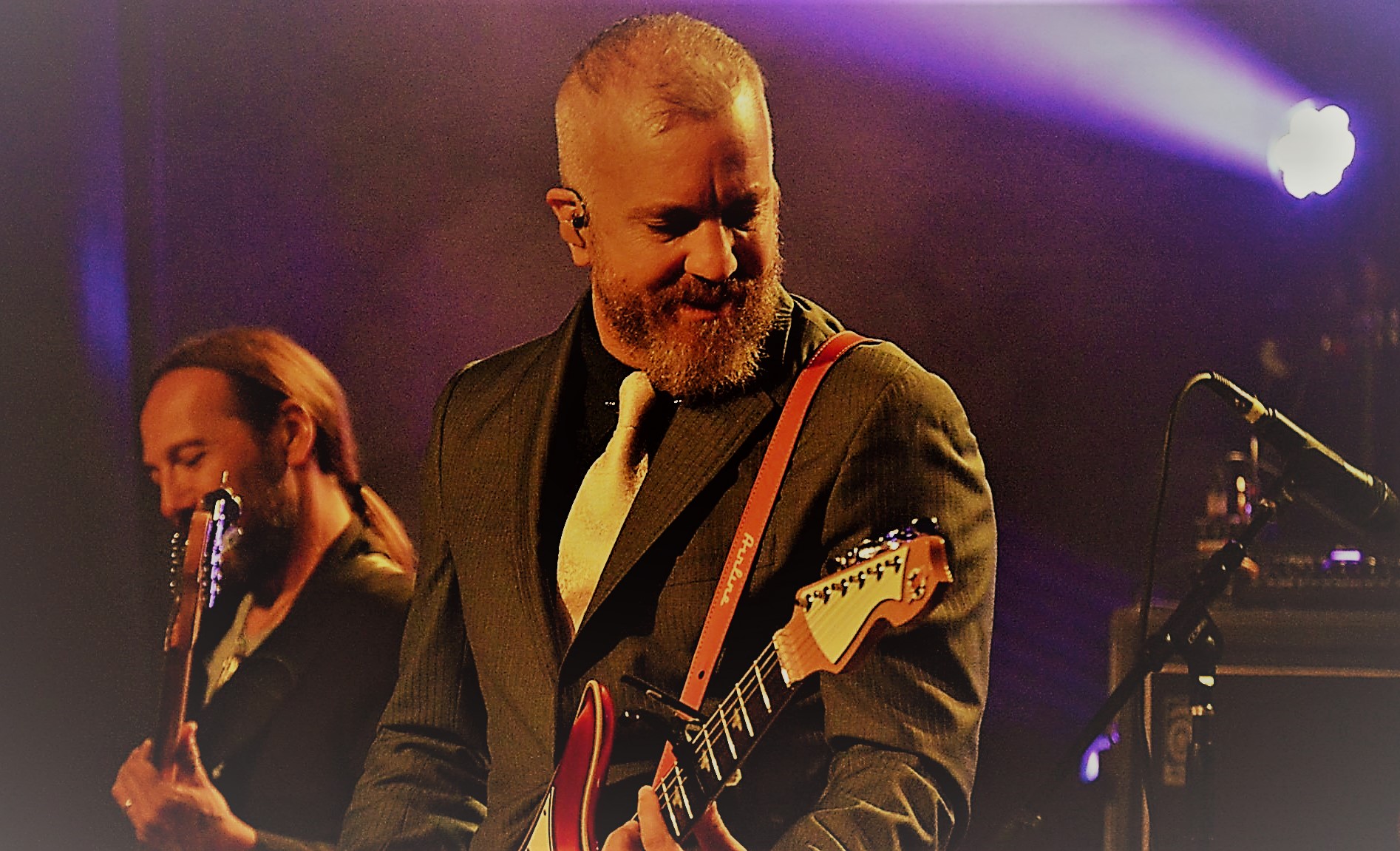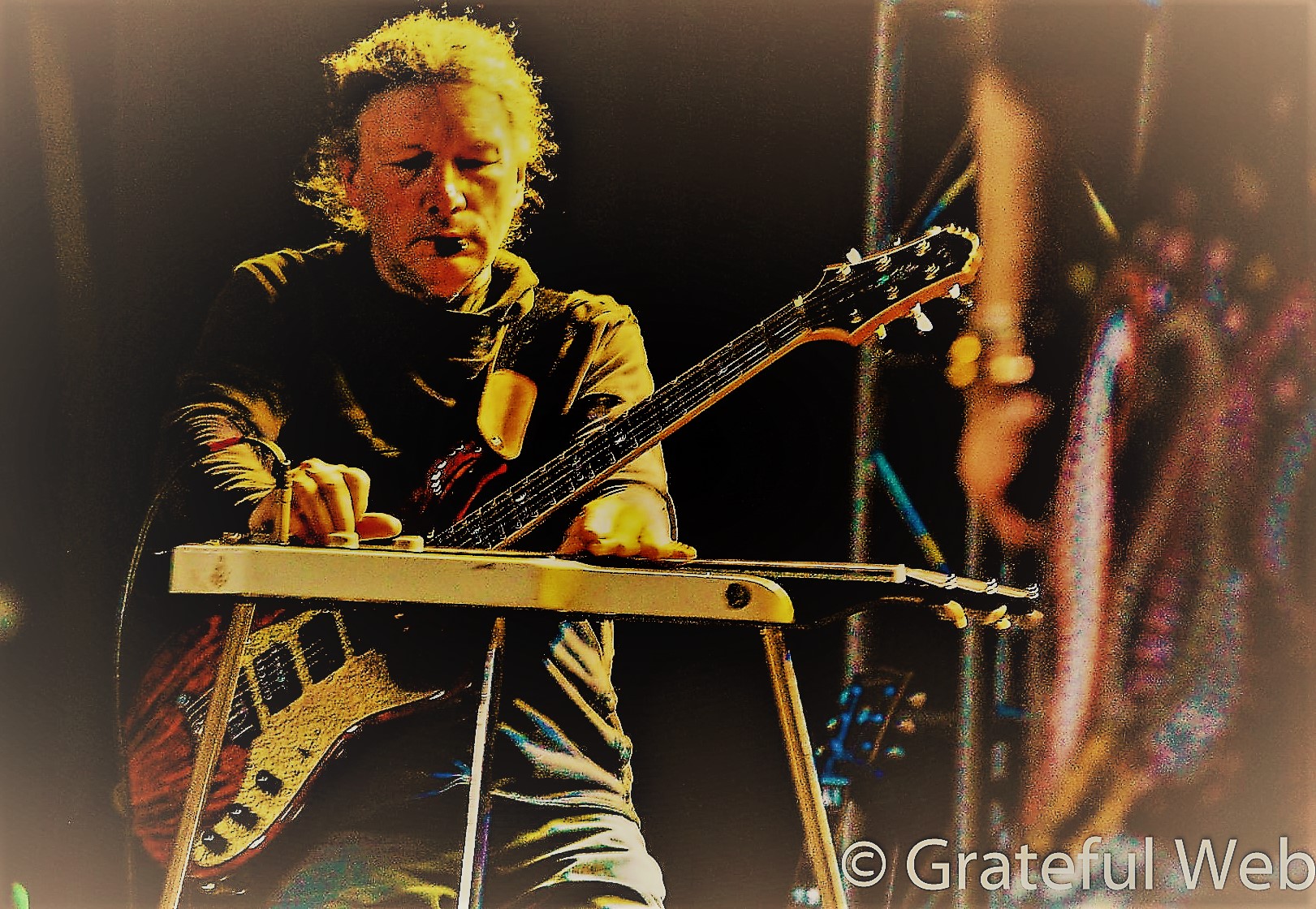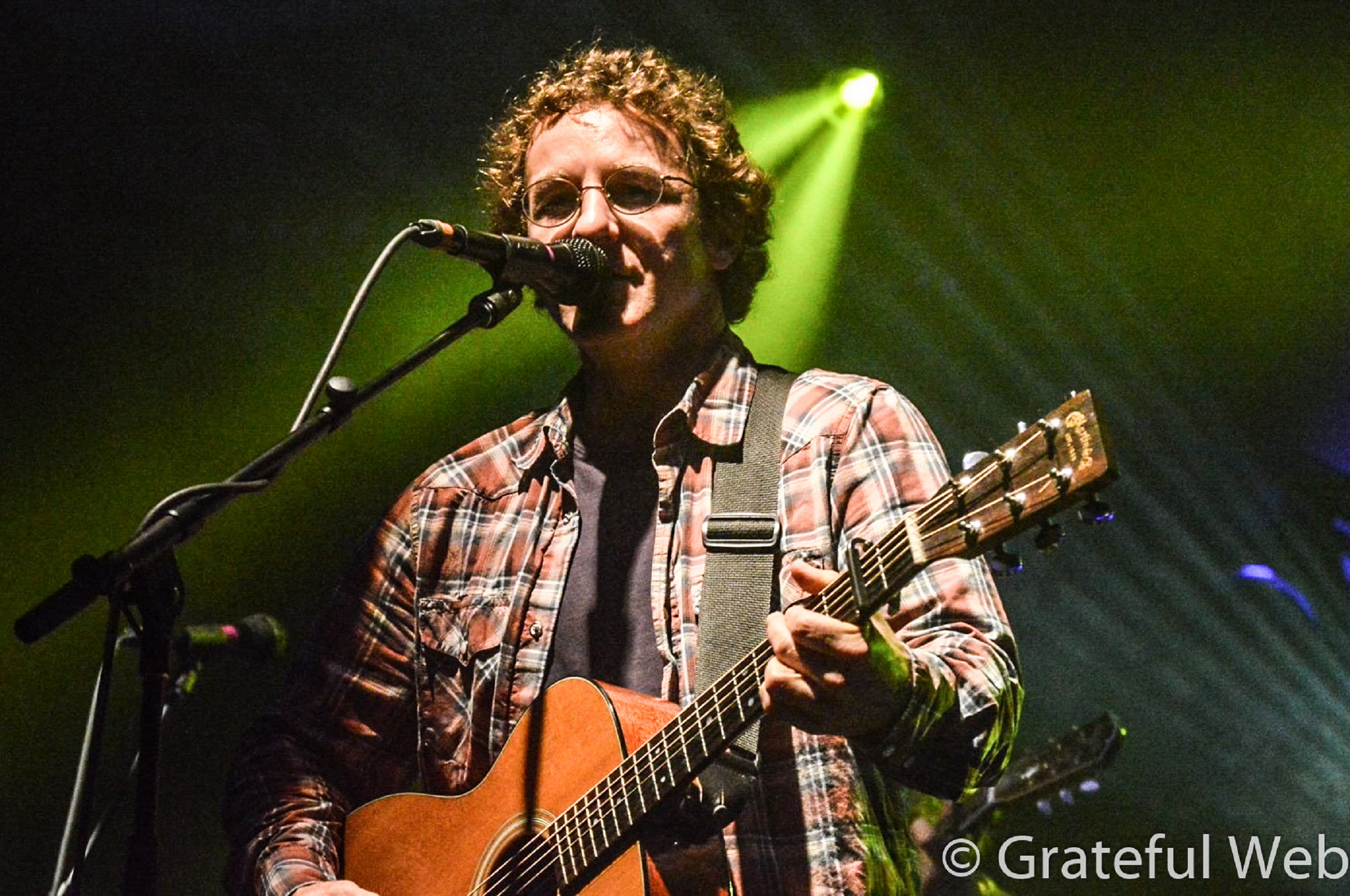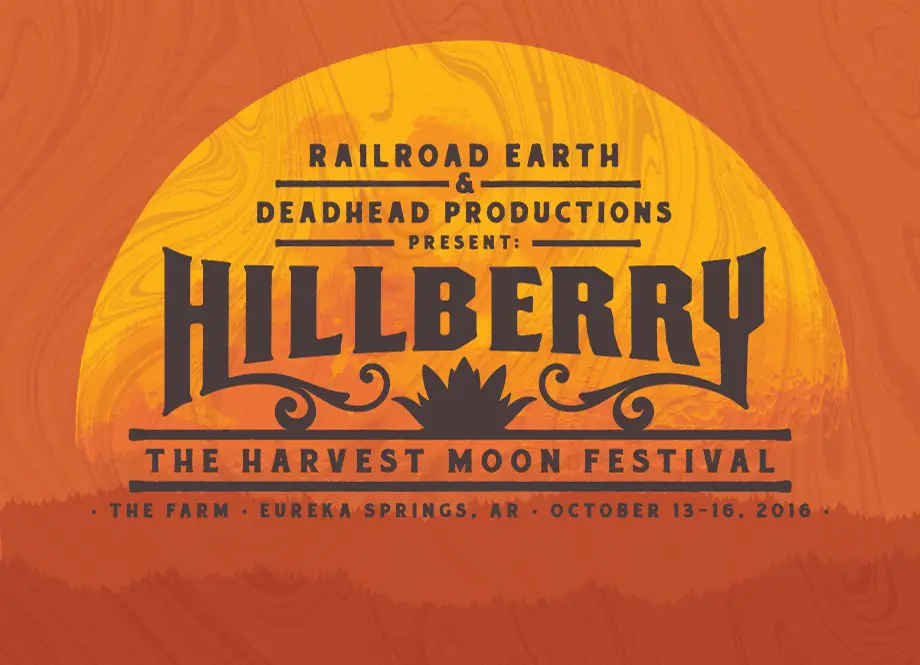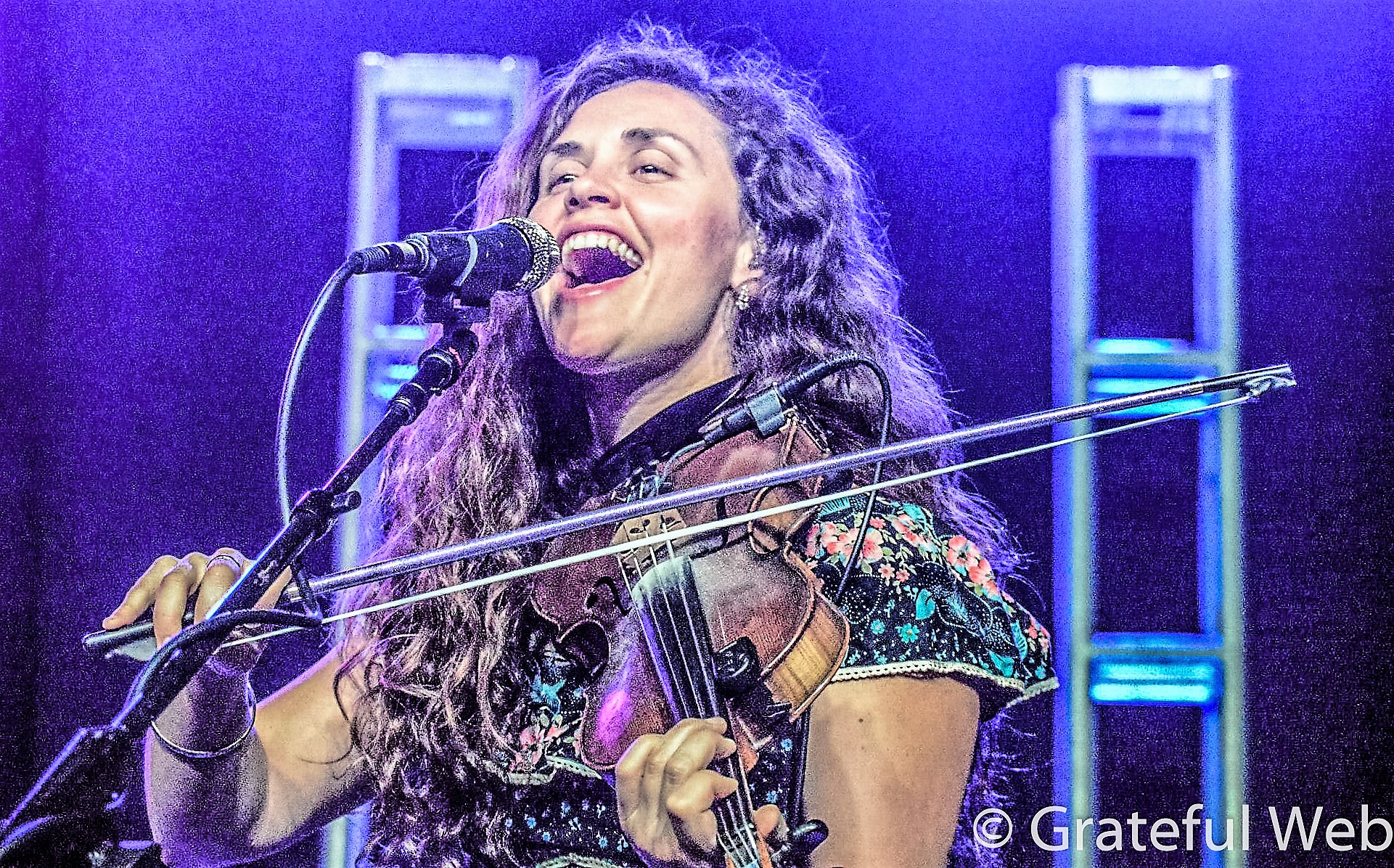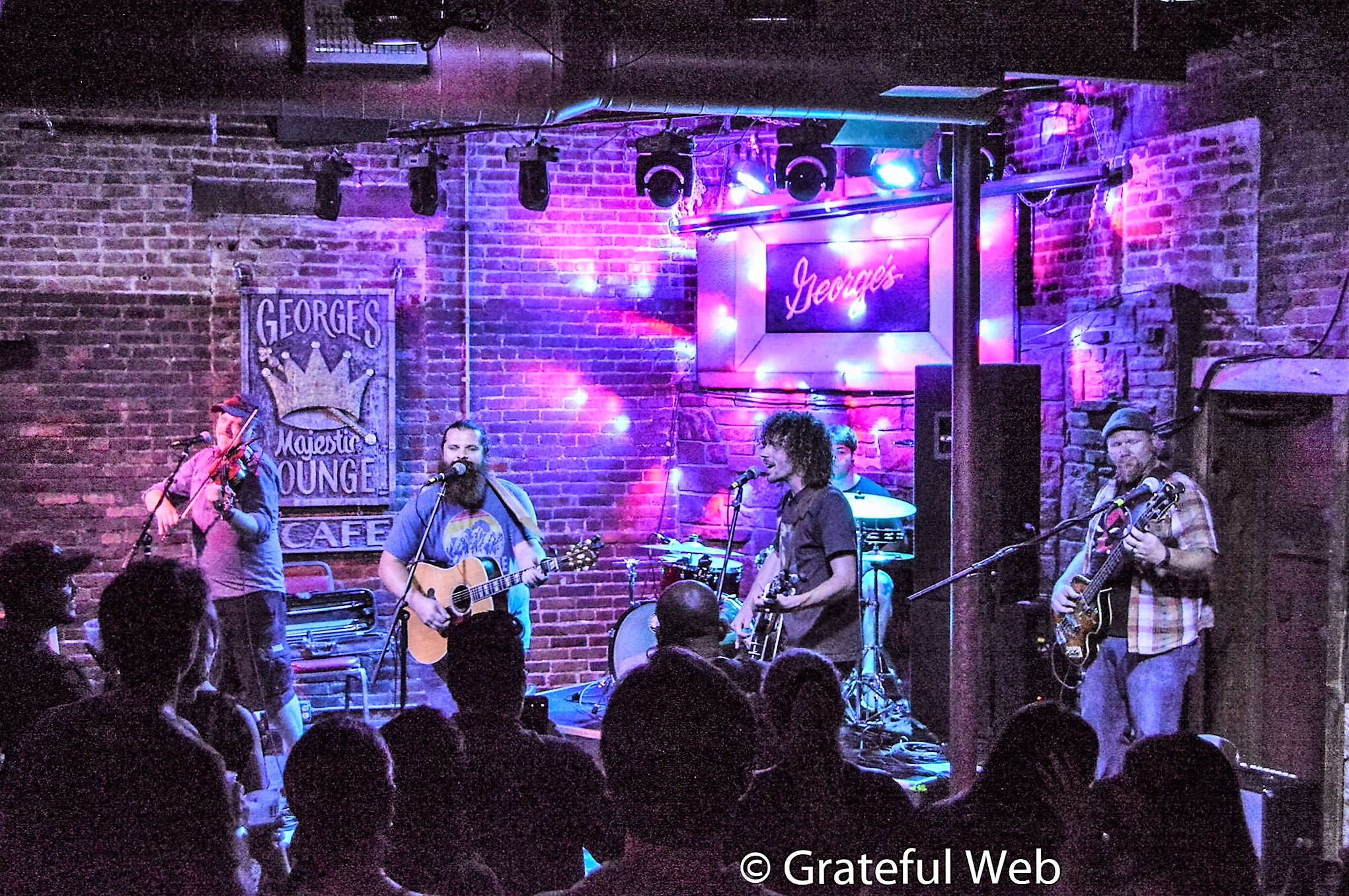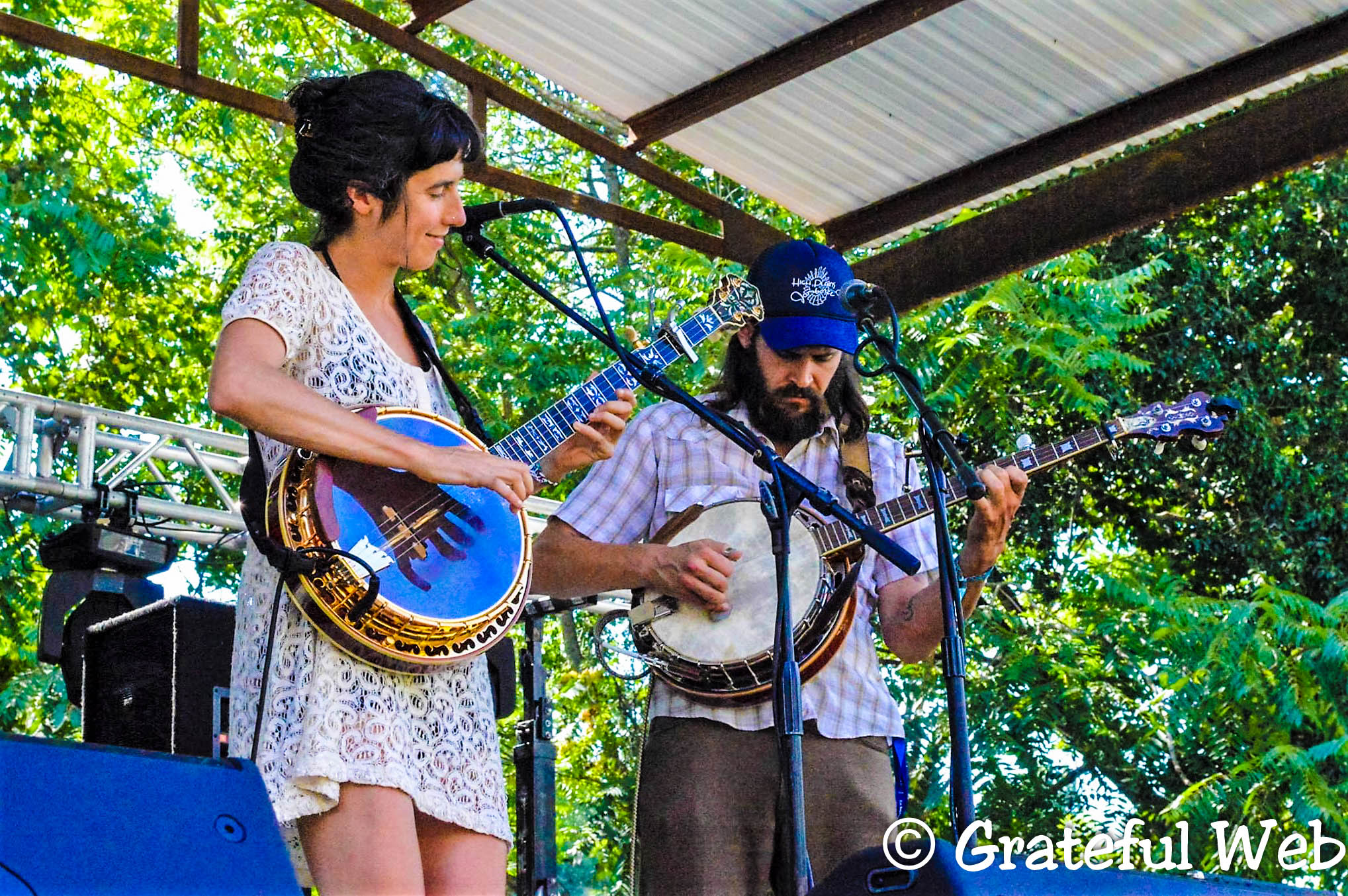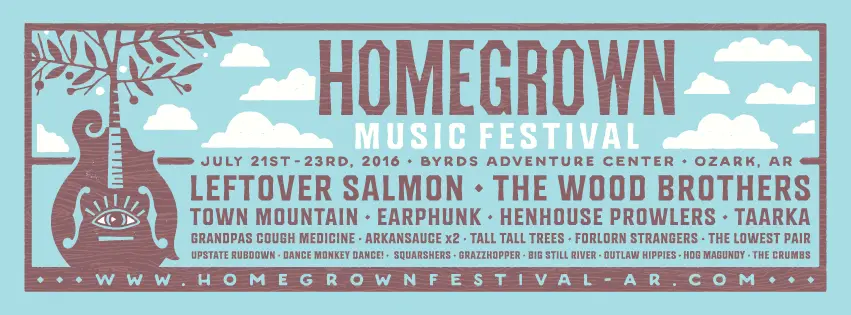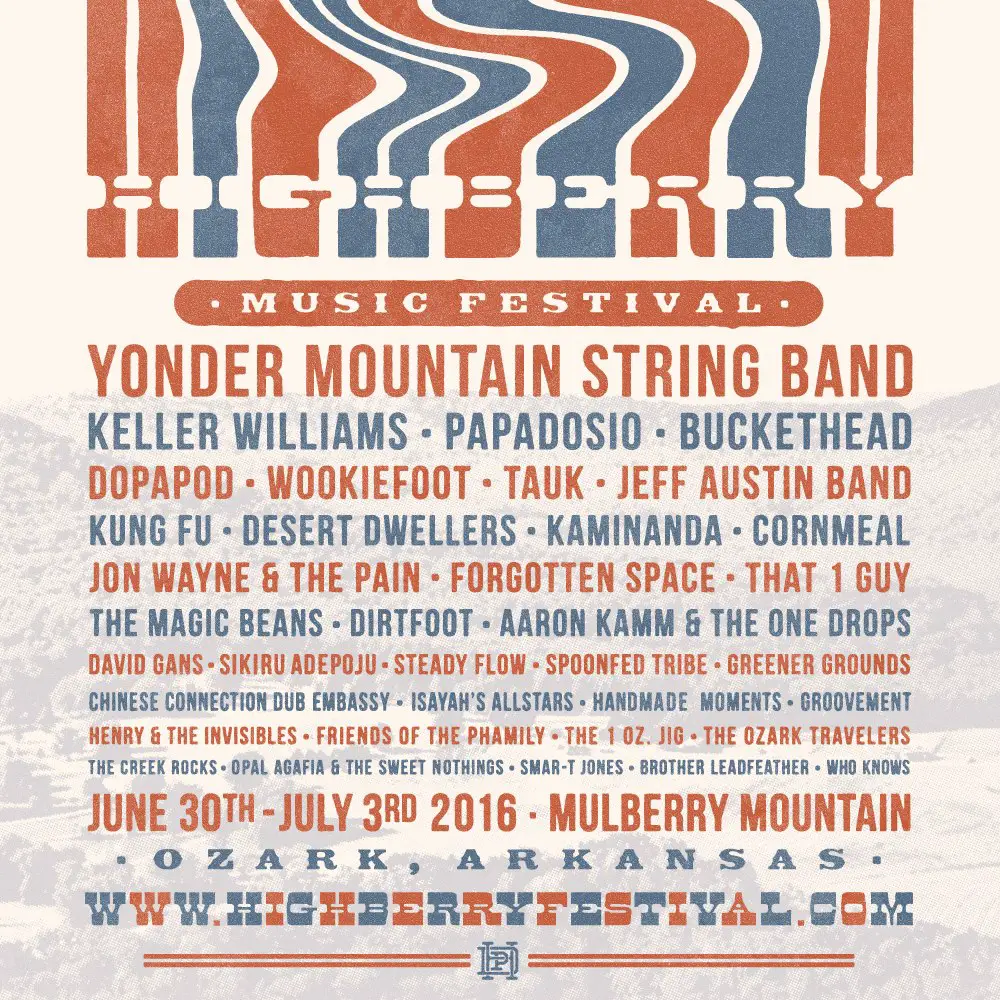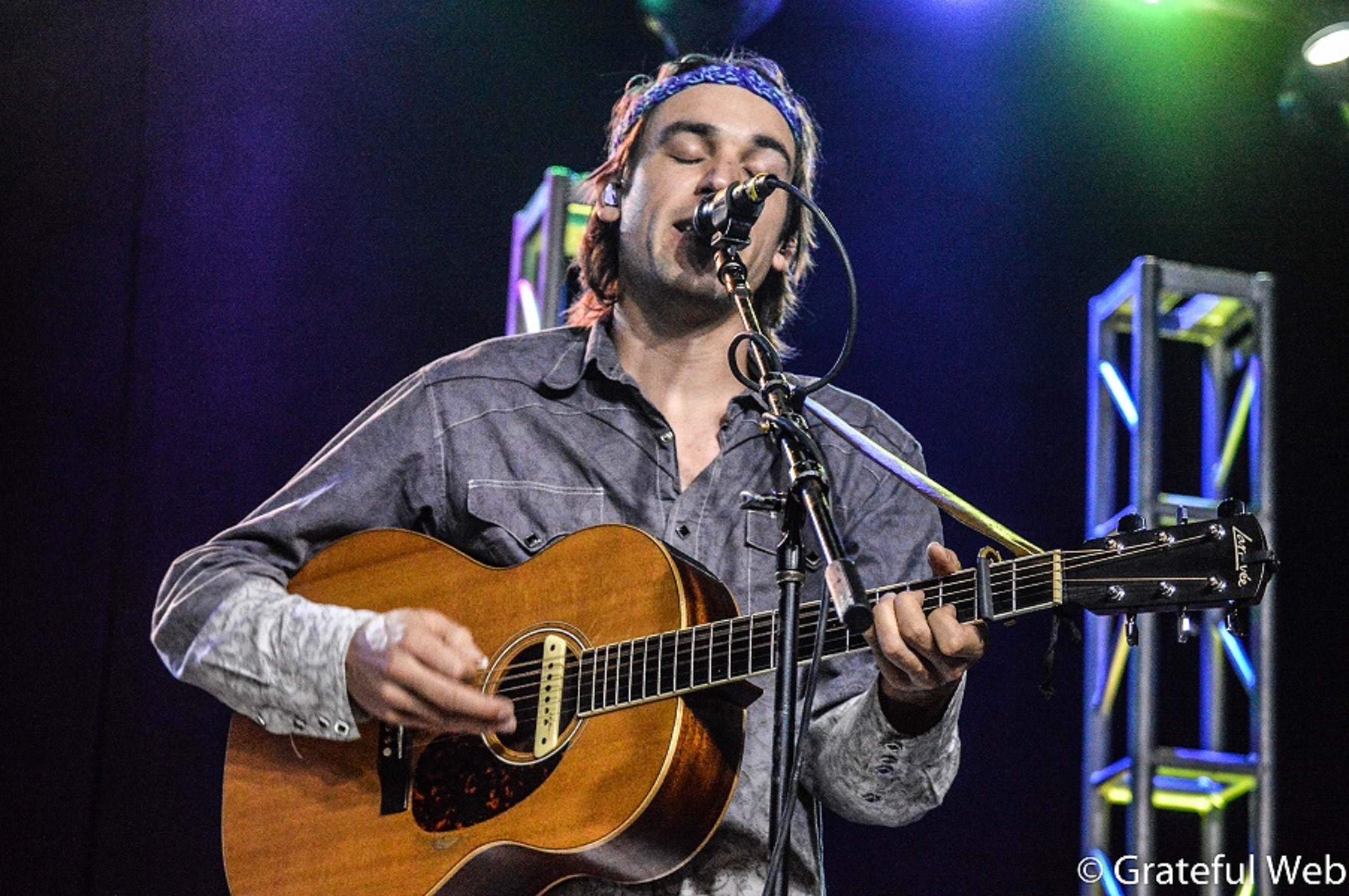In anticipation of the April 1 release of Elephant Revival’s new album, Petals, Grateful Web chatted with Bonnie Paine to learn more about the production of the album, the band’s future and Bonnie’s dreams for her own future.
Beautiful and inspiring as ever, Petals is an album you won’t want to miss. And maybe with this interview you can listen to it more deeply and with a better understanding of how it all came together.
.jpg)
GW: How was the creation of this album different than your last?
BP: It has a very different feel to me. There’s some edgier elements, like rock; and there’s some more delicate sides to it that are more sparse and stripped down. It has a broad spectrum. It’s our first time to use pedal steel, which Charlie plays. And I’m playing a lot of cello; and our first time to use any kind of drum besides hand drums. We’re very excited about it.
GW: Last time I interviewed you, you mentioned you were trying to learn to play the cello better. How’s that going for you?
BP: It’s nice to have a melodic instrument to convey songs with. It’s fun to be able to impart melodic ideas more easily. It’s the most similar to the human voice supposedly…it’s like singing with somebody.
GW: Do you feel like learning to play the cello has taught you anything about how you can play your other instruments differently?
BP: Yes – I do! I think trying out a different instrument opens your ears a little bit – you end up hearing and tuning into things differently. I hear more dynamic swells that the cello is more capable of, and it has different kinds of punctuation than I would have had had I been performing with the washboard, djembe or saw. The saw is kind of the opposite of the washboard – but you can do a lot of rhythmic stuff with the cello and a lot of swelling so it’s a combination of the [washboard and saw].
GW: What’s the most difficult song for you to play on Petals?
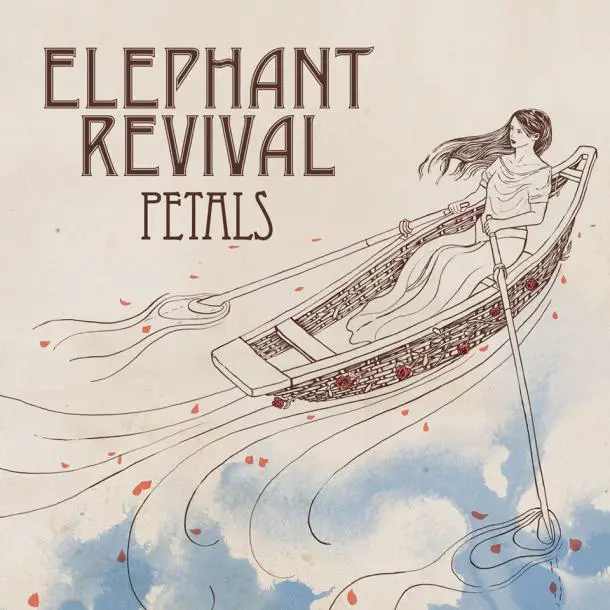
BP: Right now, the very first song on the album (“Hello You Who”) because I’m still getting comfortable playing the cello in front of people. Starting out with picks and then grabbing the bow in the middle of it, that’s been one of the bigger challenges. “Furthest Shore” is another cello song that, as a band, has been hard to incorporate because there’s a percussive breakdown with a lot of interlocking polyrhythms we recorded that’s hard to reenact.
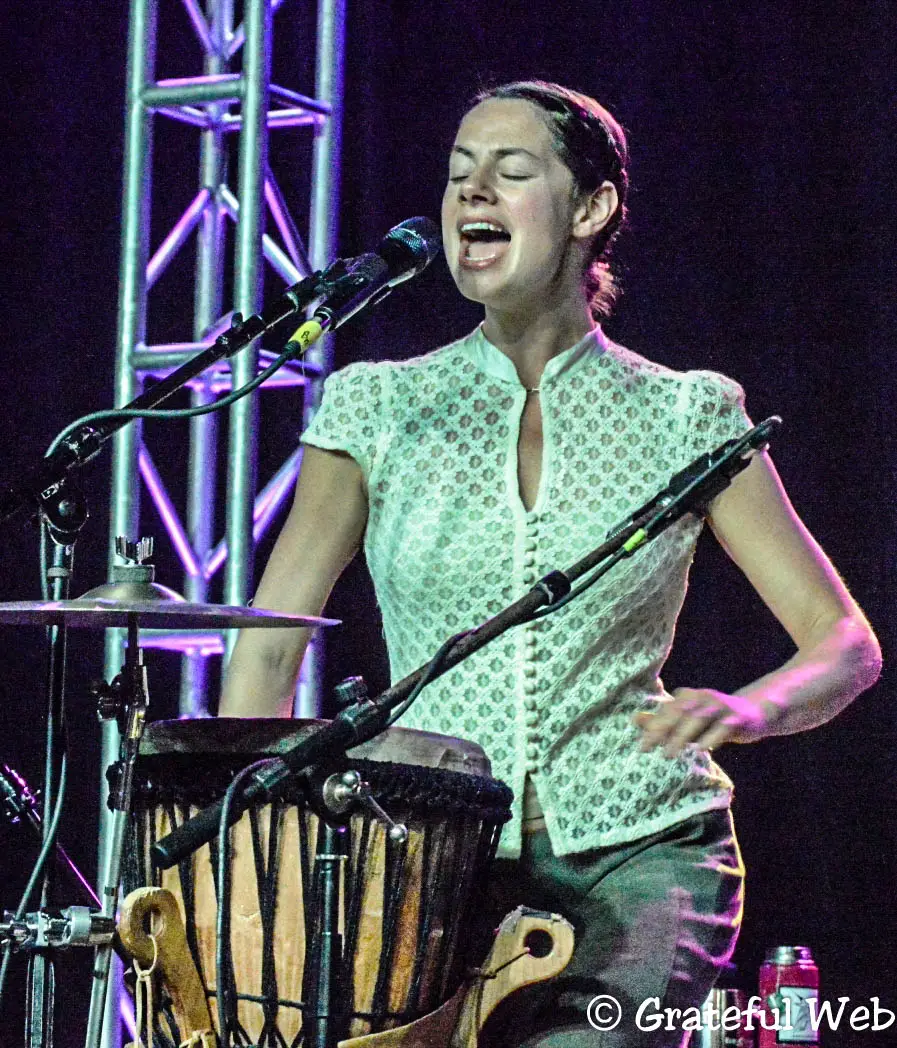
GW: So have you guys not performed [“Furthest Shore”] live yet?
BP: We played it at the Ogden Theater in Denver one night and our bus driver came up and did the polyrhythm on the cowbell, which helped a lot. Not only is he a great bus driver, he’s a great drummer and amazing friend.
GW: Is there another folk tale you want to turn into a song?
BP: That song is part of a whole bunch of songs that started with “Currach.” It’s eventually going to be an acrobatic ballet with a symphony. In the song “Currach” there’s a boy who ends up getting washed away to sea and that song, “Furthest Shore,” is when he grows up to be a man and is retelling where he’s been; he ends up on a slave ship that’s overthrown the masters and they go on all these adventures.
GW: You often perform with acrobatics at your shows – how do you feel like that changes your performance, if at all?
BP: It’s pretty enthralling – it’s like seeing another dimension of the music come alive. I was a gymnast for a while, Bridget was a ballerina so it’s a way to kind of keep that dream alive. I feel like it brings a whole other depth to the experience of music in general. We’re about to have some rehearsals with them for Red Rocks – it’s going to be a pretty big production. I’m really excited about what we’re planning.
GW: Do you and Bridget help choreograph these or do you let the artists interpret your music as-is?
.jpg)
BP: We let them interpret it. They’re amazing at choreographing so I wouldn’t want to get in the way of that. Mostly it’s performers from a group called Fractal Tribe out of Colorado.
GW: Do you have a favorite song to play from Petals?
.jpg)
BP: “Season Song” is one of my favorite songs. It’s a very stripped-down song and it just always feels so sweet when we play it. It’s not a super climactic rock song or anything, but it’s one of the songs I get right inside of. I love all the imagery that Dan has written in it.
GW: I think it’s a very unique song. The story you’re telling there is one I think a lot of people have told, but you all do it in a beautiful way and very uniquely as well.
“Petals” is a song you wrote a long time ago for a band you’re in with your sisters, right?
BP: Yeah, it’s been around for a while but it’s just now been incorporated into Elephant Revival. The band was asking about it so we tried it out and ended up having a really good time with it.
GW: How would you describe the changes in your sound since Charlie has joined the band?
BP: There are definitely a lot more rock elements with Charlie’s electrified sound. He plays around with his amps, with the pedal steel and there’s the electric guitar solo at the end of “On and On”. On the other side of that, I feel like there’s a lot more sparsity at times. We just worked up this group acapella where we all just huddle around one mic and just sing and snap. So there’s that dynamic, too, that feels very vulnerable, but we’re really enjoying it also.
GW: What’s a sound you can make with your body that you really enjoy making – that’s not just singing?
.jpg)
BP: That’s an interesting question – I don’t think I’ve ever been asked that. There’s kind of a snap thing that I like to do with my first and middle finger – as your fingers come back up after going down they make a sound going down and up so you can get more rhythms out of it.
GW: I also noticed that on this album in particular your words weave themselves very closely together. In your songwriting, what are some word use techniques you enjoy incorporating into your writing?
(1).jpg)
BP: I generally will find a melody first – and then once I can hear that melody whether it’s from a birdsong, a pattern in the river, a fan, a dryer going or even the hum of the motor of a car. I’ll find a melody out of that sometimes and try to hear the shapes of words that can fit in and try to find some words that fit those shapes to give the song a rhythmic momentum.
GW: There’s a lyric on “Home in Your Heart” that says: No one said this would be easy now / But you gotta keep moving somehow – what keeps you moving?
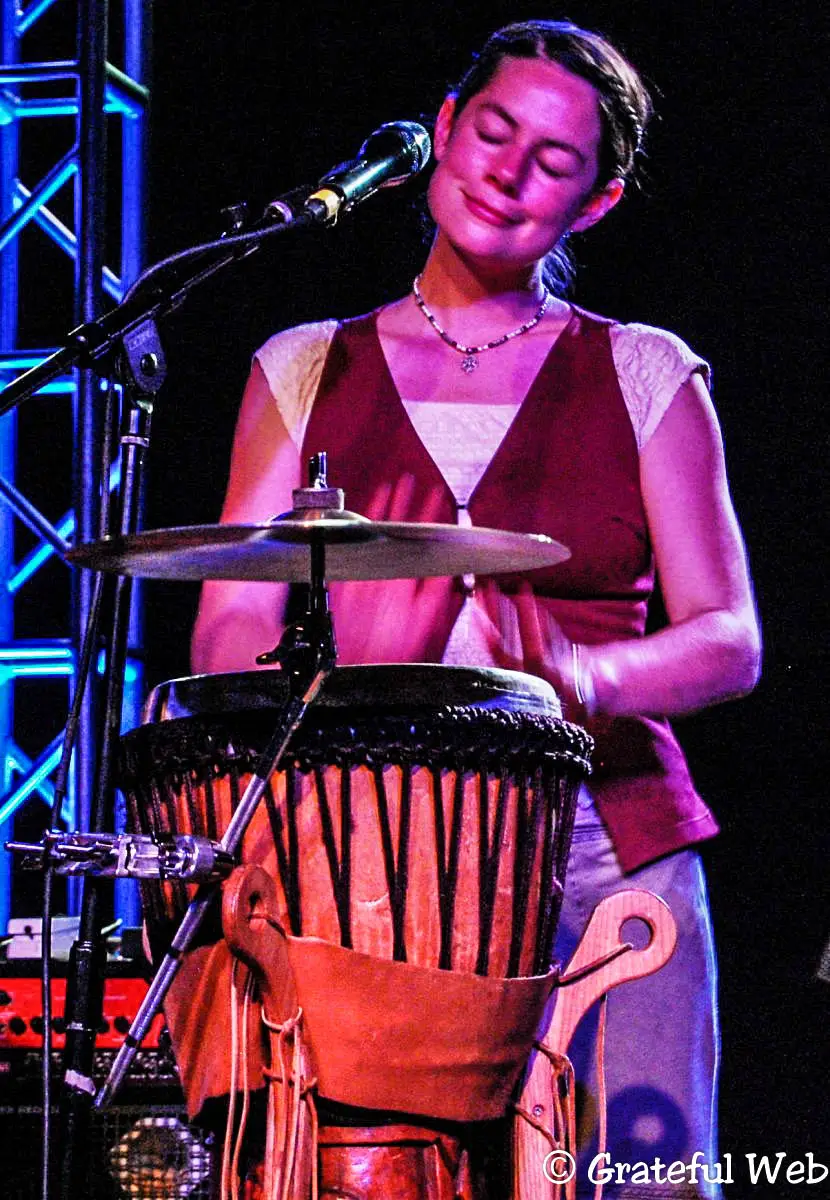
BP: Swimming in clean water is a big one. That’s one of my goals on tour to find clean water to swim in or just sit by. And having people you love in your life is, of course, inspirational and nice. Doing yoga in the mornings, not to be cliché, definitely helps me with basic energy every day. And music! I love music. Any expression of art gives meaning of life to me.
GW: What does it feel like to release an album?
BP: It feels kind of like a relief in some ways, and it’s exciting. It can be scary if you’re worried about what people will think but that’s a temporary thing and becomes not a big deal after a while. My mom always says nervousness is just misplaced excitement. It’s exciting to share something you’ve put a lot into as a group. To collaborate with any piece of art is a dance and it takes a lot of dedication and focus. We’re really, really excited about this album and we’re really excited to see how people experience it.
GW: What’s something you learned during the creation of this album?
BP: I learned a lot about the cello; there’s always lessons of listening in different forms when you record an album. Whether it’s listening to the music differently or learning how a different rhythm could bring out something in the song rather than the first rhythm you thought you might lay down.
There’s an element of space I might have gathered from this album. Sam Kassirer’s approach to percussion was really fun to work with because he has a tendency to focus more on the space between the rhythms so more things can pop out. You give a stronger structure to the song in a way the other instruments can dance in between. You’ve gotta grow a little bit or bust – to find that flexibility to just listen to each other on a different level.
GW: Are there any songs you are wanting to learn to play?
.jpg)
BP: Oh yeah, always. My mom just sent me a message yesterday that said “Not to impose, but would you like to learn to play Joni Mitchell’s ‘Woodstock’?” She’s a vocal gymnast so that was fun to play around with that. She was a big influence; [I grew up with] my mom singing Joni Mitchell. I would love to be able to play a Mozart song on the cello if I could.
And as far as writing, just maybe to bring some kind of environmental awareness without preaching it is always part of the goal. To be able to communicate something that feels important to me in a way that people can actually hear…in a way that doesn’t sound like you’re being told what to do. Just bringing a feeling of awareness and connectedness to the land we get to live within.
.jpg)
GW: What about a song you still love to play after many years?
BP: I like playing “Ring Around the Moon” still. After a year of us being together and people requested it almost every night I wondered what would happen if I ever got tired of playing it – that could be kind of difficult. But I never have, I think there’s an opening in that song for me with imagery where I feel like the audience is different every night and it helps the song be different every night. I find that with “Sing to the Mountain” and “Single Beds”, I love playing. I still love playing “Jet Lag Blues” and “Drop”, playing the drum part is really fun for me.
GW: Name a song you loved during your teenage years.
BP: I liked Fiona Apple a lot, and Tracy Chapman. I had a bunch of Mozart albums I listened to pretty much every evening when I was doing my homework. I had kind of an outdated collection I listened to because my dad has this amazing record collection that I recorded tapes of with Otis Redding, Billie Holiday and Little Feet.
My stepdad one day brought me Stone Temple Pilots and Pearl Jam albums and said “I just got these for you because it would be good for you to listen to music other kids your age are listening to.” It never even occurred to me, so that was a different kind of journey.
How about you?
GW: Gosh. I listened to a lot of country music – I grew up in Kansas. So I listened to a lot of those story songs, and I really liked Garth Brooks.

BP: Oh yeah, he was from Tulsa, Oklahoma, right? He used to play with my mentor growing up, Randy Crouch. They would have little jams together back then.
There’s a lot of good music in Kansas, too. I have a good friend named Allison Olassa out there, who’s one of my favorite musicians. Sometimes it’s hard to get out of Kansas – there’s this great mecca of music that I want people to hear out there.

GW: What’s something that’s been on your mind lately?
BP: This music video has been on my mind. I’m trying to visualize it – we have so many artist’s perspectives coming together. Laura Goldhammer is kind of spearheading the whole thing and she’s made amazing music videos. And my cousin Leslie is a phenomenal artist – she makes everything in the scene and then she paints it, so that will be part of the video.
My friend Bailey is also a great artist and an adventurer who’s ridden wild horses across Mexico and Mongolia is going to come and help out. And then our friend Michelle will come do the photography of it all because it’s going to be mostly stop motion. It will be very interesting to see all these perspectives weave together.
GW: How would you describe what this video will be like?
BP: The idea is to portray recognizing how we identify ourselves and how we relate to the world, which is a pretty abstract thing to start with.
There’s going to be some really interesting scenes. There’s going to be this ballroom scene in the middle that Laura’s really excited about. I can tell you how it starts: There will be a person looking into the mirror and that will be where the fantastical world is that my cousin has built. That fantastical world turns into a painting of a ballroom and there’s this wild dance in the middle of the song. It’s really hard to explain now that you ask.
So far everything they’ve made is so beautiful – it’s beyond what I had imagined.
GW: What’s something you want to do more of?
.jpg)
BP: I always want more nature adventures on the road – that’s a constant priority that’s hard to attain when you’re touring musicians. That’s more of my natural element than the touring lifestyle, but I’m grateful for all we get to do and see. It’s nice to have the stillness you can get from non-structure areas. And to see more family and people you love. Maybe grow a garden someday.
Other than that, to continue in the direction we’re going. I love all these places we get to play – beautiful theaters which are really fun because the sound is so strong in there. To see all these big halls reverberating, more of that would be good.
.jpg)
GW: What about something you’d like to do less of?
BP: Driving through the night. *laughs* But I’m grateful we have the potential to do that if we need to. Maybe doubt less – how to doubt less but still keep an open mind for potential.
GW: What’s a dream that you have for the band’s future?
BP: I would like to have a kind of music festival called The Art of All Forms. We have such an amazing community of artists that we’re part of and have it be a foundation to express whatever they’re doing as an art form. Even have the art of growing food, and cooking food, the art of sustainable living, the art of homeopathic medicine, the art of dancing, the art of communication. Just to have all of these workshops and everything people do that they feel passionate about could be represented as an art form.
Sometimes I think it’s hard for people to recognize that they are a type of artist, even if they aren’t a musician or a painter. What you’re doing is a neat form of art. It empowers people and helps break down the boundaries of what they’re doing when they approach it as an art.
We’ll probably have our first one of those in Colorado. Eventually I would love to go on a train through the U.S. and Canada, and document that whole adventure. Say we had a few stops across the country – we’d reach out to artists from that area to have an opportunity to highlight and bring recognition to their community that these people exist.
.jpg)
If you’re curious about non-violent communication or a different approach to psychiatry, to help bring awareness to resources they have that might resonate more with people and how they eat, live or connect with family.
GW: As you were saying all of these things I was thinking of other forms of art that you didn’t mention. One of them is, when you said non-violent communication, there is a Tibetan Buddhist Geshe who lives here [in Fayetteville] and brings in monks who create sand mandalas. And I also thought of midwives – bringing children into the world as a form of art.
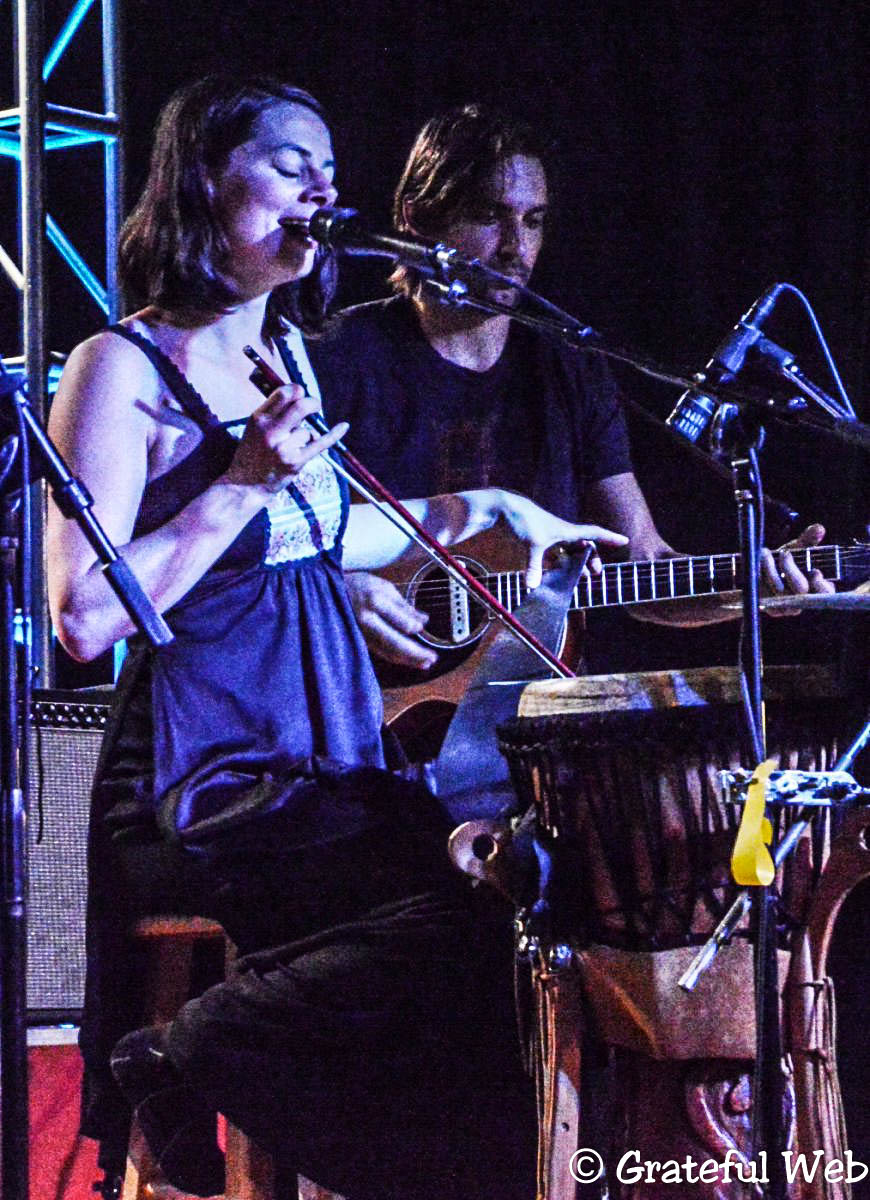
BP: I want to be a midwife someday – I think that is a very important art form. It’s immensely huge right now. Even if a person can’t have a midwife, just to have a doula can be such a beautiful part of the process.
I’ve always wanted to have a group called The Singing Doulas where we learn birth songs from around the world and get to sing during birth. I got to sing at my first birth last January – it was so amazing. I actually sang at my friend’s funeral just two days before, and I sang to her right before she passed. And then two days later my friend gave birth and asked me to come sing there. It was a neat dynamic to go from singing at a death to a birth – very impactful for me.
It’s hard to find birth songs. In case a person does end up in a hospital or unfamiliar setting that feels sterile for their birth, songs can bring you to a sense of familiarity and ground you. Help you feel connected when you are about to give birth.
GW: My next question was going to be: What’s a dream you have for your future in general? Sounds like you told me a few of those already.
BP: That’s definitely a big one; I think the way people are introduced to the world is very important. For people to feel welcomed right away is huge. I’ve witnessed a couple births in a hospital; one where the child, as soon as he came out, was wrapped up in a blanket to where his arms couldn’t move and they stuck a needle in his foot and squished this antiseptic in his eyes. It was devastating to see this little person…that was their introduction – it’s hard on a person.

GW: I wonder what small things about somebody’s brain or attitude – if things like that really do affect a person.
BP: I definitely think they do, and people underestimate that. I think there’s an idea for children and babies that they’ll just black that out. I think people really underestimate how important it is to be embraced when you come out of such a cozy little place and just worked so hard to get out of it. I would like to encourage people to take that moment, right when a child is born, to hold them.
.jpg)
GW: It’s like when somebody stops hugging you before you’re ready for it to end – it can be shocking.
BP: Yeah, or showing up in a place that is completely different than anything you’re familiar with. How would you want to be received into that element that is familiar?
That is definitely a big, big dream: to learn birth songs from around the world. And maybe to do the traveling it takes to find those. And also the ballet thing, the Currach story I was telling you about. I know a lot of neat dancers and performers that could help it become a really neat, neat show.
GW: It’s been awesome speaking with you – I’m glad you could give me lots of things to think about! Do you have any announcements about the band you want people to know about?
BP: We’ll be headlining Red Rocks! It’s our first time to headline Red Rocks and we’re really, really excited. With Josh Ritter and Rising Appalachia on May 22nd. And the aerial performances are going to be really neat, they’re building contraptions that we can rig to make it very special.







